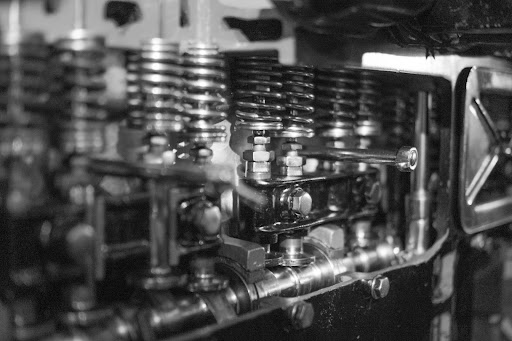Spring Size Matters: Nesting, Adhesion, & Volume For Spring Finishing
“Nesting” is a term for the tangling of components that are similar in shape, especially when a large number of them fit neatly against one another and create a somewhat solid clump of components.
This is a problem that presents a unique challenge with barrel plating and spring finishing techniques. Barrel spring plating can be incredibly efficient — it takes far less time than rack spring plating, and can accommodate much higher volumes, so it’s generally a cheaper method per unit. However, the size of the components you’re plating also matters because it can affect nesting behaviors of the parts.
How Does Spring Size Affect Nesting & Adhesion?
When you’re barrel plating large industrial springs, you’re enjoying the efficiency of the barrel’s size. It can fit more of the large springs and be filled more easily than a rack. Those springs will achieve good plate adhesion and be finished before you know it.
However, when you’re plating high volumes of smaller springs, they’ll have a tendency to “nest” in the open environment of the barrel, where all of the components are sitting in one big pile. This can be problematic, not only because you’ll have to un-nest the components later, but because it can affect the quality of the plated finish. Nesting is the main reason that manufacturers will sometimes consider a rack plating technique instead so that their springs are more spread out and less likely to nest.
Why Does Nesting Affect Plate Quality?
When a large number of components are nested together in a tight clump, there is a high degree of contact between the surface of the parts. The more surface area that is in contact with other parts rather than the spring plating solution, the less surface area is receiving the deposits needed to build up the plating layer. This is not nearly as much of a problem with larger springs, as fewer of them are stacked on top of one another in the barrel and less overall contact is occurring between parts.
What Can I Do to Reduce Nesting in Barrel Spring Plating?
The best approach is to barrel plate your springs with lower volumes (and therefore longer processing times) in order to prevent nesting. In smaller numbers, it’s possible to ensure that not many springs are stacked up and clumping together in the barrel and that the resulting plating will be consistent in quality with good adhesion.
These factors mean that it’s not easy to use a direct weight-to-weight comparison when you’re pricing out spring plating jobs for springs. Smaller springs must be processed in smaller batches with lower overall weight per batch in order to ensure a high-quality plating finish. Larger springs can more safely be processed in high-weight batches without compromising the results. This is the reason you may see things priced differently. The size of the springs you’re plating matters as it impacts their behavior in the barrel.
Have any more questions about spring finishing and plating? Get in touch with Metal Finishing Technologies for expert advice and/or a fast quote!

